Every year when the City of Paris announces that it’s time for Paris Plages (Paris Beaches), I get excited and immediately write the dates down in my planner. I hardly ever leave the city or get to go to a beach or the sea. Not that I’m a beach bum or anything: I don’t even own a proper bathing suit and I don’t carry a towel or care to bury my toes in the sand. I go to Paris Plages for a quiet stroll alone or with a friend, a good read, people-watching, to have an ice cream or sip a cool cup of City of Paris bubbly water at the water bar, and to enjoy the warm weather.
 Paris Plage, created by former mayor of Paris Bertrand Delanoë in 2002, began as a single beach located on the George Pompidou Express Road that runs along the Seine between the Pont de Sully and the Pont Neuf, on the Right Bank. The road is closed to motor traffic for a month, dozens of palm trees and several tons of sand are brought in, picnic umbrellas, tables, and lounge chairs are set up, and the fun begins! In 2007, a second beach opened along the Canal de l’Ourcq (part of the La Villette Basin), and the project became Paris Plages in the plural. It was so successful that it was copied by the cities of Brussels, Berlin, and Prague.
Paris Plage, created by former mayor of Paris Bertrand Delanoë in 2002, began as a single beach located on the George Pompidou Express Road that runs along the Seine between the Pont de Sully and the Pont Neuf, on the Right Bank. The road is closed to motor traffic for a month, dozens of palm trees and several tons of sand are brought in, picnic umbrellas, tables, and lounge chairs are set up, and the fun begins! In 2007, a second beach opened along the Canal de l’Ourcq (part of the La Villette Basin), and the project became Paris Plages in the plural. It was so successful that it was copied by the cities of Brussels, Berlin, and Prague.
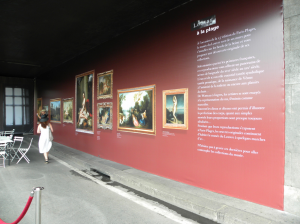
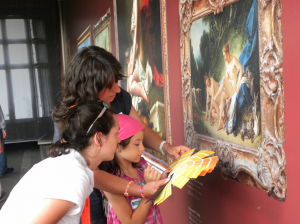 Every year, new activities and sights spring up at both beaches and in front of City Hall. “Louvre at the Beach” is a small gallery of paintings and sculpture, all with a bathing theme, on the western end of the beach under the Quai du Louvre. Families can sit at tables and participate in Louvre-related activities run by smiling hostesses to learn more about art or pull up a lounge chair and relax with an art book from the gallery’s reading area. Each afternoon there are drawings to win art books, postcards, or Louvre tickets. Last week, I was delighted to rediscover the mini red Eiffel Tower constructed entirely out of 324 Fermob bistro chairs. It was originally displayed on the Champ de Mars near the real Tower a few weeks ago to celebrate the 125th birthday of both the chairs and the Tower. I also marveled at the new “water bar” in a corner of City Hall Square complete with bartenders dispensing both flat and carbonated City of Paris water, tables and chairs to relax and have a chat, and interactive games with a water theme.
Every year, new activities and sights spring up at both beaches and in front of City Hall. “Louvre at the Beach” is a small gallery of paintings and sculpture, all with a bathing theme, on the western end of the beach under the Quai du Louvre. Families can sit at tables and participate in Louvre-related activities run by smiling hostesses to learn more about art or pull up a lounge chair and relax with an art book from the gallery’s reading area. Each afternoon there are drawings to win art books, postcards, or Louvre tickets. Last week, I was delighted to rediscover the mini red Eiffel Tower constructed entirely out of 324 Fermob bistro chairs. It was originally displayed on the Champ de Mars near the real Tower a few weeks ago to celebrate the 125th birthday of both the chairs and the Tower. I also marveled at the new “water bar” in a corner of City Hall Square complete with bartenders dispensing both flat and carbonated City of Paris water, tables and chairs to relax and have a chat, and interactive games with a water theme.
The FNAC Live Music Festival kicked off Paris Plages at City Hall Square last weekend with a series of free indoor and outdoor evening concerts by diverse popular musical groups. Wheelchair basketball and beach volleyball courts, both with instructors, are now installed at the Square and visitors can come there to watch games or learn to play. In the evening, street shows such as jugglers, musicians, and mimes can be seen along the beach and there’s a generally festive atmosphere amid the crowds.
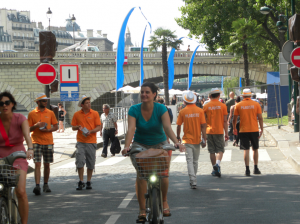
 Although actual bathing in the Seine is not allowed, Paris Plages offers many other activities for the whole family. Children and teens can find a pool, sandbox, merry-go-round and electric boats and play games organized by the French Secours Populaire, use the tyrolean (air cable rolling), take hip-hop classes, or go to a Sunday afternoon ball. For adults, there’s ballroom dancing, pétanque (the French bowl game you often see people playing in parks), and a Paris Rendez-Vous souvenir boutique. For all ages, there are libraries with reading areas, mini-Velib’ and Velib’ bicycle rental, sandcastle building and photo contest, Tai Chai classes, a mini-soccer game table, kayaking, rowing, paddling, a cool mist sprinkler (my personal favorite), cafés food and ice-cream stands.
Although actual bathing in the Seine is not allowed, Paris Plages offers many other activities for the whole family. Children and teens can find a pool, sandbox, merry-go-round and electric boats and play games organized by the French Secours Populaire, use the tyrolean (air cable rolling), take hip-hop classes, or go to a Sunday afternoon ball. For adults, there’s ballroom dancing, pétanque (the French bowl game you often see people playing in parks), and a Paris Rendez-Vous souvenir boutique. For all ages, there are libraries with reading areas, mini-Velib’ and Velib’ bicycle rental, sandcastle building and photo contest, Tai Chai classes, a mini-soccer game table, kayaking, rowing, paddling, a cool mist sprinkler (my personal favorite), cafés food and ice-cream stands.
Health-and-well-being-conscious visitors can go to the blood donation center and/or find information about security, first-aid, prevention, and City of Paris drinking water at dedicated booths either on the walkway or at the water bar. All of these activities and the materials are free of charge to the public, except for food and adult Velib’ bicycle rentals.
If none of the things I’ve mentioned appeals to you or your family, a short promenade on Paris Plages affords a spectacular view of several of Paris’ most beautiful buildings and monuments: City Hall, Conciergerie, Sainte-Chapelle, Palace of Justice, Cathedral of Notre Dame, Saint-Jacques Tower, as well as the tiny Ile Saint Louis and the beautiful river Seine and its bridges. Photos taken at Paris Plages during the day or at sunset are a unique souvenir.
There’s something for everyone at Paris Plages, whether you are a tourist, resident, old or young, employed, or retired. Whatever you decide to do at the beach, here’s some advice – don’t forget to bring your hat, sunscreen, and water bottle. It gets very hot down there, even if you’re just strolling by the palm trees or walking through a sprinkler.
Practical information:
Opening hours:
Every day from 9 to midnight, from July 19 to August 17, 2014
How to get there:
RIVE DROITE
MÉTRO : stations Louvre-Rivoli (ligne 1), Pont-Neuf (line 7),
Châtelet (lines 1, 4, 7, 11, 14), Hôtel-de-Ville (lines 1, 11),
Saint-Paul (line 1), Pont-Marie et Sully-Morland (line 7).
RER : station Châtelet-les-Halles (lines A, B, D).
BUS : lines 21, 24, 27, 38, 47, 58, 67, 69, 70, 72, 75, 76, 81, 87.
lines 24, 27, 81 et 96.
BATOBUS : station Hôtel-de-Ville.
VÉLIB’: stations in front of the Tuileries tunnel,
Place de l’Hôtel-de-Ville (City Hall)and behind Hôtel de Ville, rue Lobau.
LA VILLETTE BASIN
MÉTRO : stations Jaurès (lines 2, 5, 7 bis), Crimée (line 7),
Laumière (line 5).
BUS : lines 54 et 48.
VÉLIB’ : station in front of Maison des Canaux.
Website: http://www.paris.fr/parisplages
Map and activities schedule: http://filer.paris.fr/quefaire/uploads/files/Plan_verso_Bassin.pdf

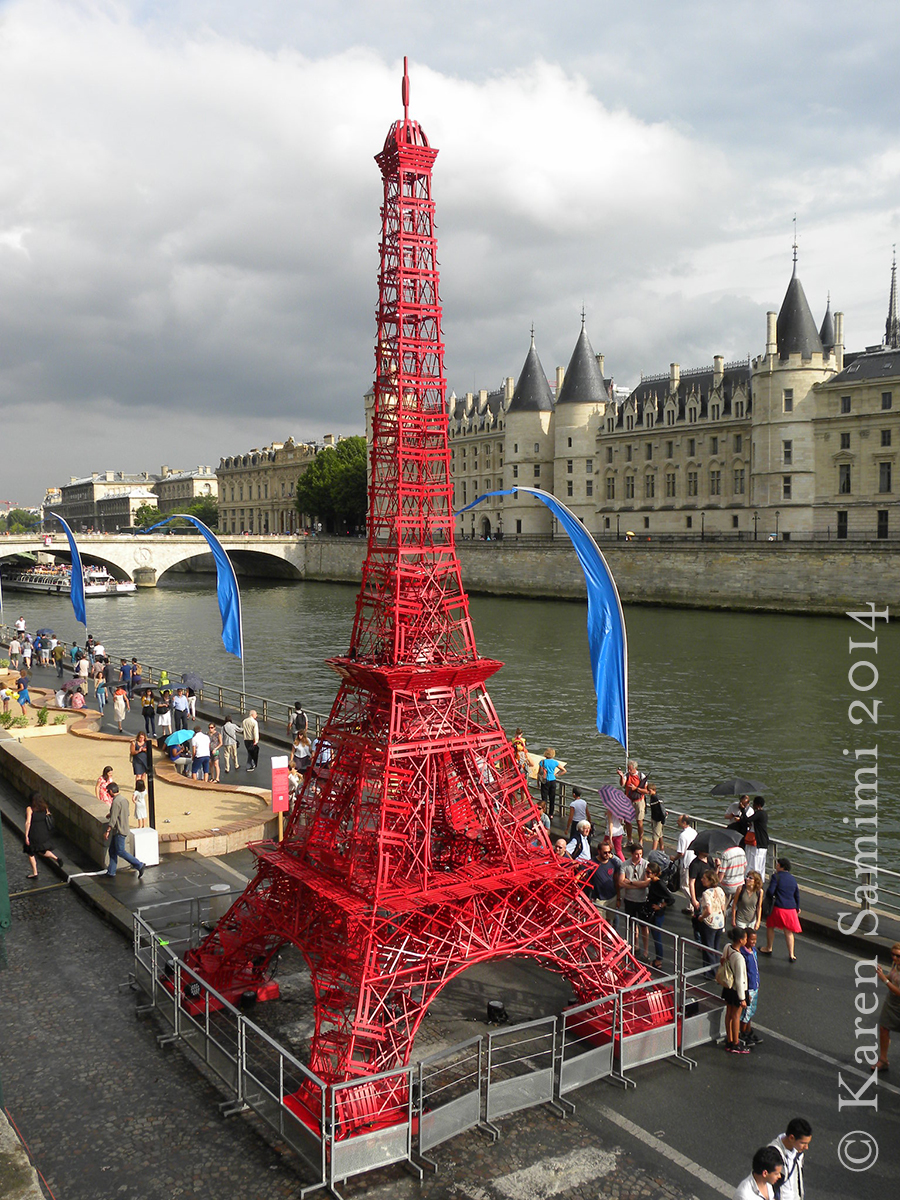
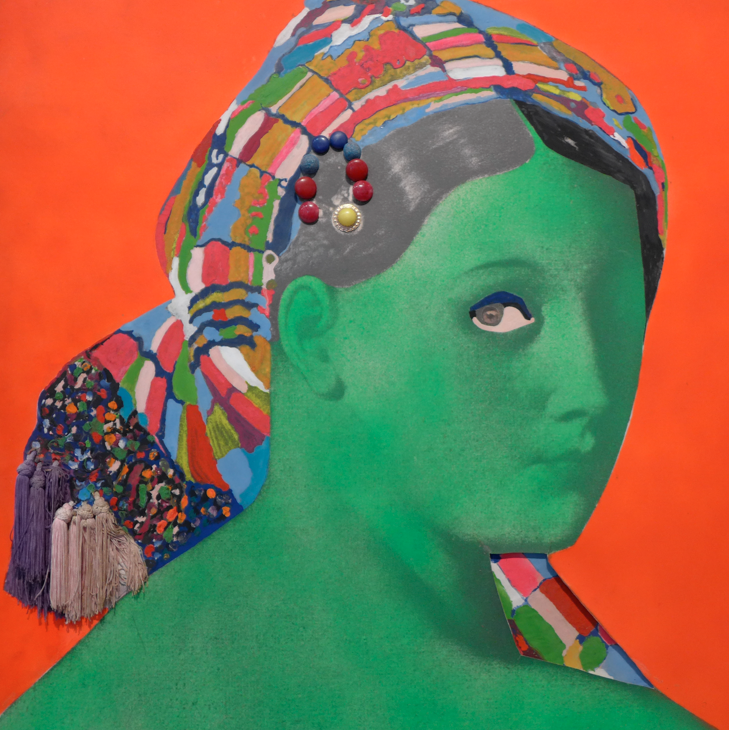
 started collaborating with its thriving ceramics industry. Jean Cocteau was dran to the area, which is how he met Raysse. The two did a joint show together in 1958, when Raysse was only 22.
started collaborating with its thriving ceramics industry. Jean Cocteau was dran to the area, which is how he met Raysse. The two did a joint show together in 1958, when Raysse was only 22.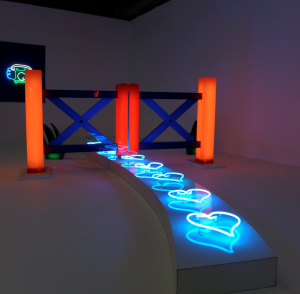 Their concept was “the poetic recycling of reality.” If you now the work of these artists, then Raysse draws on color as the primary source of power for his work.
Their concept was “the poetic recycling of reality.” If you now the work of these artists, then Raysse draws on color as the primary source of power for his work.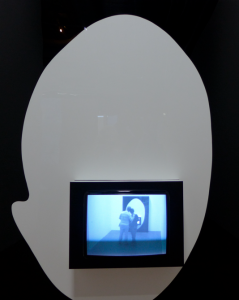
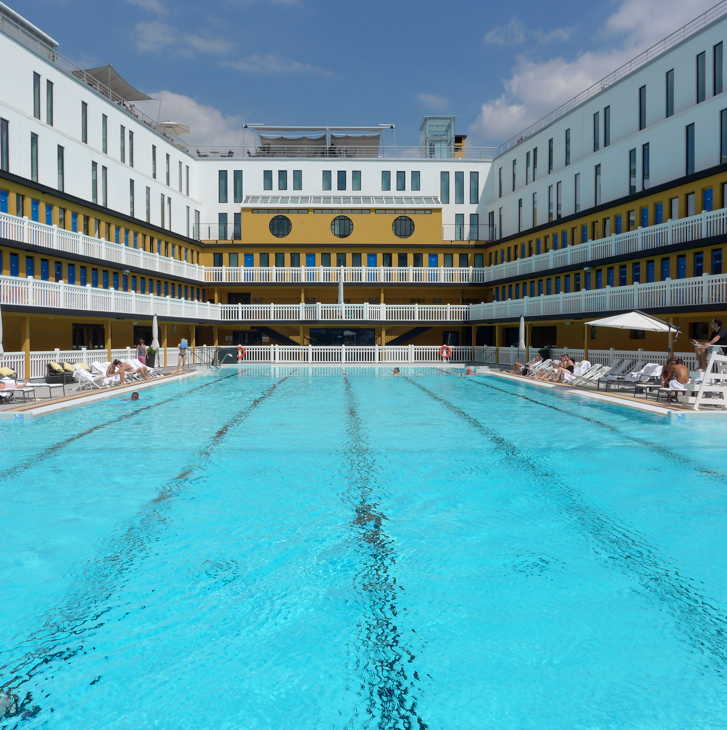
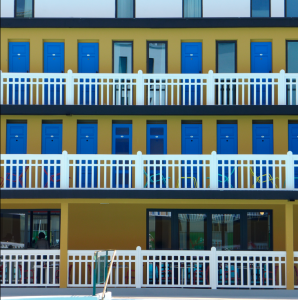
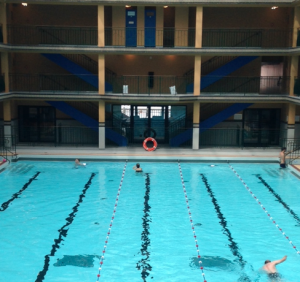

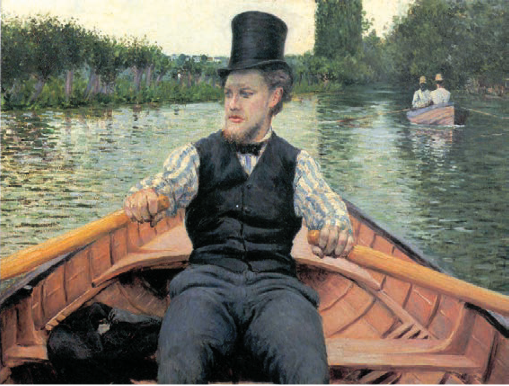
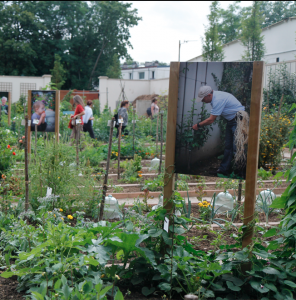
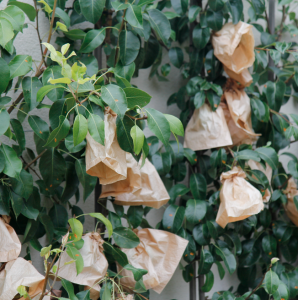

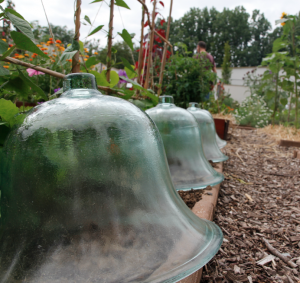
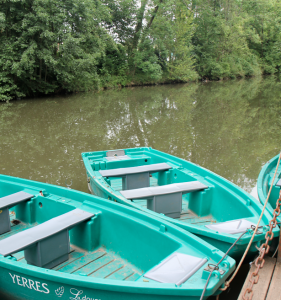
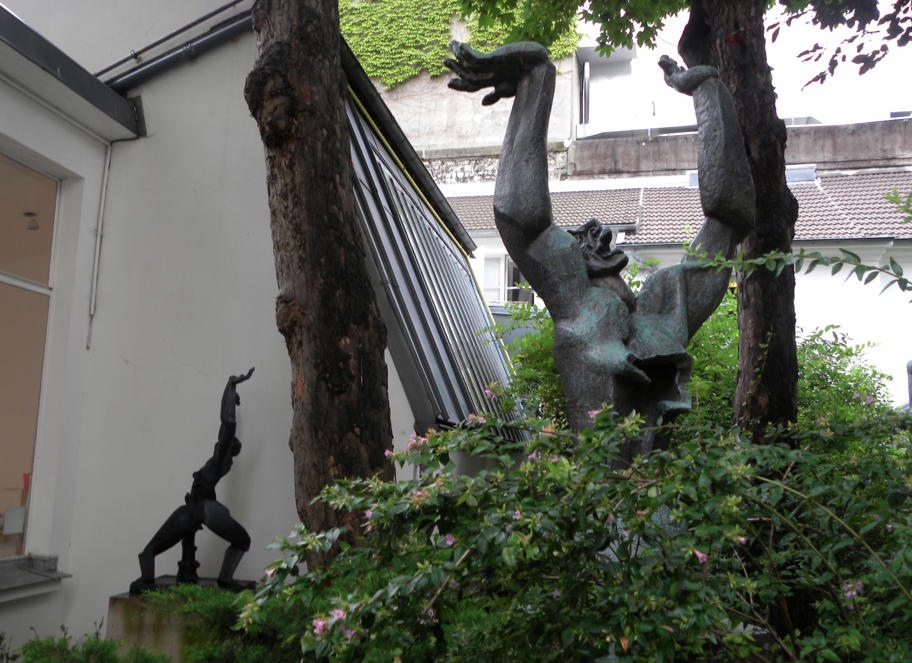
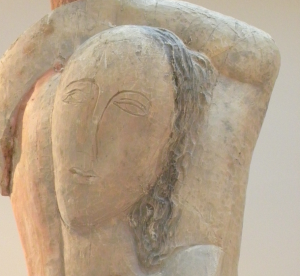

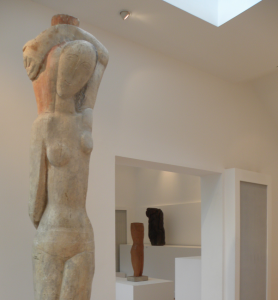 I found the larger-than-life sculptures particularly interesting : “Torso of the Destroyed City” in bronze visible in the garden, “Rebecca” or “Big Water Carrier” crafted in plaster displayed in Room 2, and “Prometheus” sculpted in elm, housed in the garden workshop. Visitors can actually walk all the way around each of these works to admire the detail.
I found the larger-than-life sculptures particularly interesting : “Torso of the Destroyed City” in bronze visible in the garden, “Rebecca” or “Big Water Carrier” crafted in plaster displayed in Room 2, and “Prometheus” sculpted in elm, housed in the garden workshop. Visitors can actually walk all the way around each of these works to admire the detail.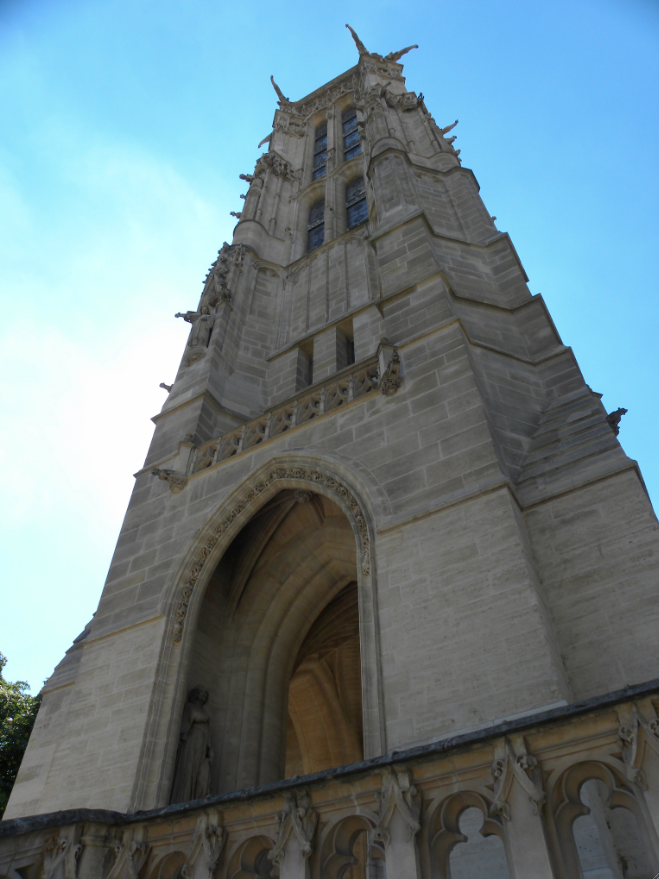
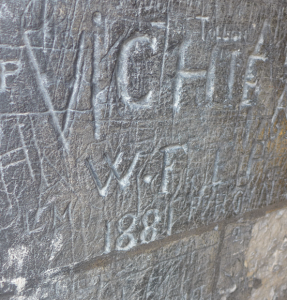

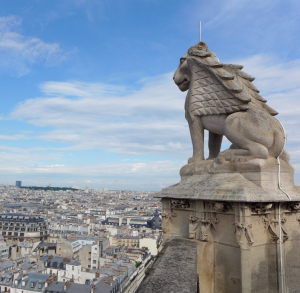 The Tour Saint Jacques is a Flamboyant Gothic bell tower, a modern 16th century addition to a 15th century church, St Jacques de la Boucherie. Boucherie is French for butchery and the church was surrounded by butcher shops and other businesses, including the public writing studio of Nicholas Flamel, who is buried below. For the last 600 or so years, it has been the starting place for the pilgrimage to St Jacques de la Compostelle. Following the French R
The Tour Saint Jacques is a Flamboyant Gothic bell tower, a modern 16th century addition to a 15th century church, St Jacques de la Boucherie. Boucherie is French for butchery and the church was surrounded by butcher shops and other businesses, including the public writing studio of Nicholas Flamel, who is buried below. For the last 600 or so years, it has been the starting place for the pilgrimage to St Jacques de la Compostelle. Following the French R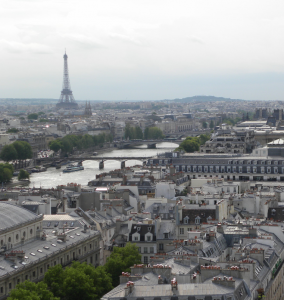 evolution the government owed a lot of money to a local businessman, so they gave him the church and he took it apart, selling the stones off to the highest bidders. Since then, the tower has inspired artists, scientists and intellectuals. Dumas wrote a story set in the park, and it is believed that Blaise Pascal used the site for his experiments with atmospheric pressure.
evolution the government owed a lot of money to a local businessman, so they gave him the church and he took it apart, selling the stones off to the highest bidders. Since then, the tower has inspired artists, scientists and intellectuals. Dumas wrote a story set in the park, and it is believed that Blaise Pascal used the site for his experiments with atmospheric pressure.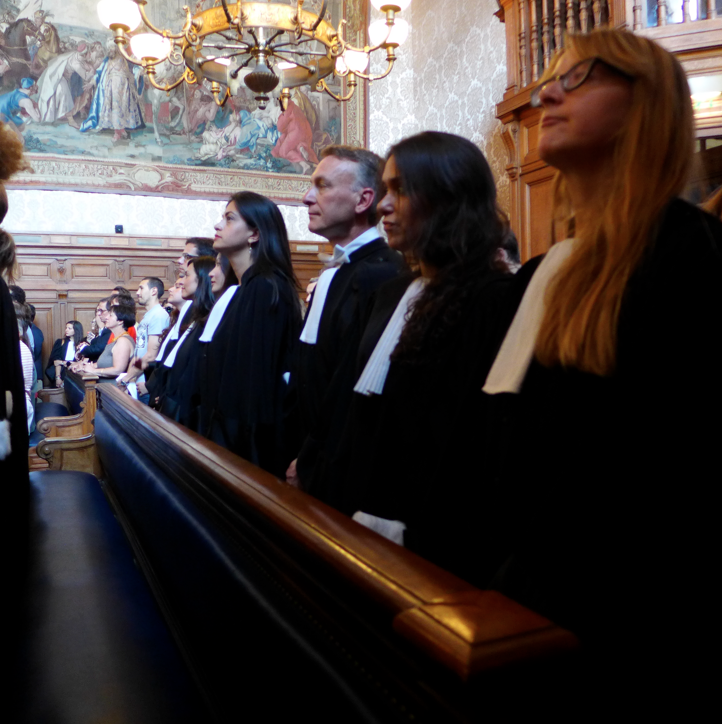
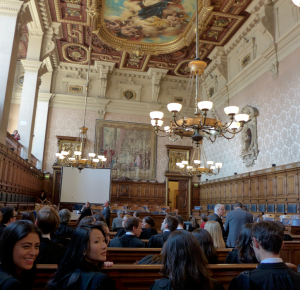
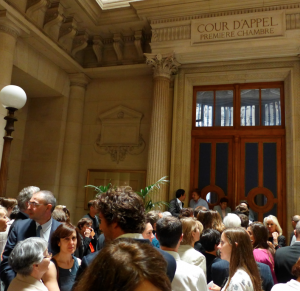
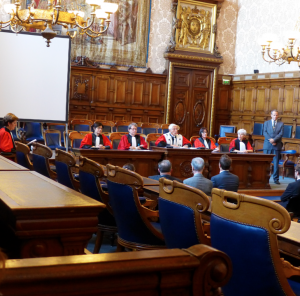


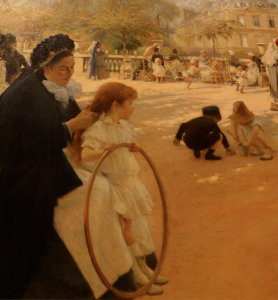 Until I reached the fashion room with illustrations of a Parisenne’s day, fans and gowns, which had me completely under its spell as I read about the Trottins. These were the young girls who would deliver hats to the haute couture clients and they were considered to be the epitome of good fashion and elegant taste, inspiring a journalist to write, “What differentiates the Parisienne from other women is a discreet elegance in every aspect of her social life; sobriety, taste, innate distinction, and the indefinable something only she possesses, that blend of bearing and modernity we call chic.”
Until I reached the fashion room with illustrations of a Parisenne’s day, fans and gowns, which had me completely under its spell as I read about the Trottins. These were the young girls who would deliver hats to the haute couture clients and they were considered to be the epitome of good fashion and elegant taste, inspiring a journalist to write, “What differentiates the Parisienne from other women is a discreet elegance in every aspect of her social life; sobriety, taste, innate distinction, and the indefinable something only she possesses, that blend of bearing and modernity we call chic.”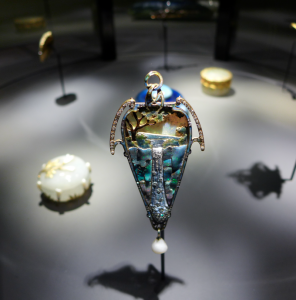 Further on, a space dedicated to the performing arts had a small theater playing the first sci-fi film ever made, Voyage to the Moon.
Further on, a space dedicated to the performing arts had a small theater playing the first sci-fi film ever made, Voyage to the Moon.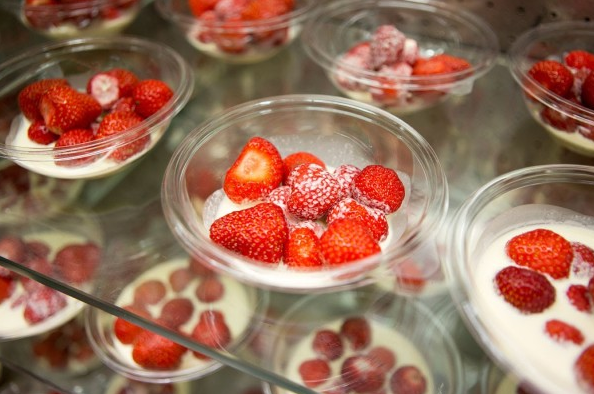
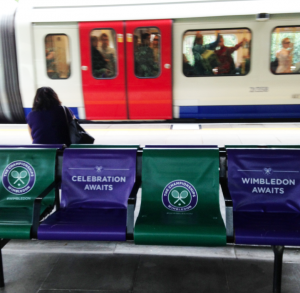 Getting to Wimbledon couldn’t be easier. The town is a terminus, so its a direct trip on the District Line to Wimbledon, then you step out on to a enthusiastically decorated platform and follow the crowds. Formally clad “Honorary Stewards” guide you along the way while helmet topped Bobbies direct traffic. Ticket holders are directed to one sidewalk, non-ticket holders to the other. There are taxi that can be shared and I suppose we could have hired a driver, but why sit in traffic when one can be walking with the fans!
Getting to Wimbledon couldn’t be easier. The town is a terminus, so its a direct trip on the District Line to Wimbledon, then you step out on to a enthusiastically decorated platform and follow the crowds. Formally clad “Honorary Stewards” guide you along the way while helmet topped Bobbies direct traffic. Ticket holders are directed to one sidewalk, non-ticket holders to the other. There are taxi that can be shared and I suppose we could have hired a driver, but why sit in traffic when one can be walking with the fans!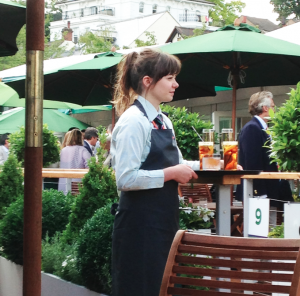 when we arrived and were greeted by a polished waitress offering us a Pimm’s. I had first heard of a Pimm’s a week ago while reading a piece of British chick lit. In the novel, the heroine, a simple girl from the wrong side of the tracks (or in the case of this book, castle) had been invited to a society wedding and had gotten dangerously drunk because she hadn’t realized it was a cocktail, not a soda. Pimm’s is a gin inspired drink that is served with soda on ice, with a fresh fruit and herb garnish. It was a delicious welcome to the match.
when we arrived and were greeted by a polished waitress offering us a Pimm’s. I had first heard of a Pimm’s a week ago while reading a piece of British chick lit. In the novel, the heroine, a simple girl from the wrong side of the tracks (or in the case of this book, castle) had been invited to a society wedding and had gotten dangerously drunk because she hadn’t realized it was a cocktail, not a soda. Pimm’s is a gin inspired drink that is served with soda on ice, with a fresh fruit and herb garnish. It was a delicious welcome to the match.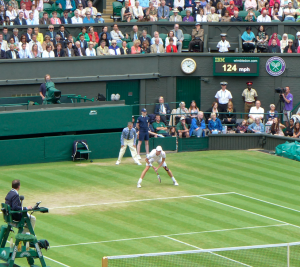 Finally, it was game time! We headed out on to the grounds where there is a center court, another large stadium and a dozen open courts with nothing more than a few park benched around them. The benches were swarmed with fans, sitting, leaning, climbing to see the games, as rackets arched into the air and the yellow streaks of balls cluttered our peripheral vision. Tennis was happening all around us!
Finally, it was game time! We headed out on to the grounds where there is a center court, another large stadium and a dozen open courts with nothing more than a few park benched around them. The benches were swarmed with fans, sitting, leaning, climbing to see the games, as rackets arched into the air and the yellow streaks of balls cluttered our peripheral vision. Tennis was happening all around us!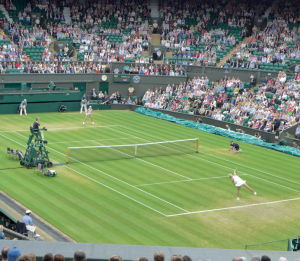 When the French player lost, our English hosts cheered us with an invitation to return to the marquee for a consolation afternoon tea, and at last, strawberries and cream.
When the French player lost, our English hosts cheered us with an invitation to return to the marquee for a consolation afternoon tea, and at last, strawberries and cream.